Caesarea is a city that Herod the Great dedicated to Caesar Augustus more than 2,000 years ago.
The aqueduct, originally built by Herod in the first century BCE, was repaired and expanded by the Romans in the second century CE. It conveyed water to the city from springs at the foot of Mt. Carmel over 10 kms. away. (Ministry of Tourism Photo)
Once the site of a Phoenician port, over the course of 12 years Herod built Caesarea into the grandest city other than Jerusalem in Palestine, with an aqueduct, hippodrome and magnificent amphitheater that remain standing today. In 6 CE, Caesarea became the home of the Roman governors (Procurators) of Judea.
The Great Revolt of 66-70 CE started in Caesarea when the Jewish and Syrian communities began fighting over a pagan ceremony conducted on Shabbat near the entrance of a synagogue. The Romans ignored the Jewish protests of this provocation and violence soon spread throughout the country. When the Romans finally quelled the revolt, and razed Jerusalem, Caesarea became the capital of Palestine, a status it maintained until the Roman Empire was Christianized by the Emperor Constantine in 325 CE.
Caesarea was also the site where the Romans tortured and executed Rabbi Akiva following the Bar Kochba revolt in 135 CE.
Fun fact: The only golf course in Israel is in Caesarea.
Caesarea is an important site in Christian history. This was where Simon Peter converted the Roman, Cornelius, the first non-Jew to believe in Jesus. Paul was also imprisoned for two years in Caesarea.
After the Muslims swept out of Arabia and across the Middle East, driving out the Romans, Palestine was largely neglected. In 1101, the Crusaders captured the city, only to lose it in 1187 to Saladin.

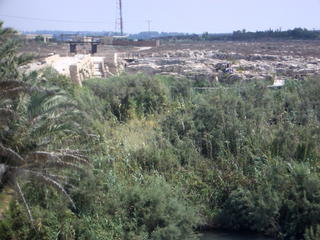
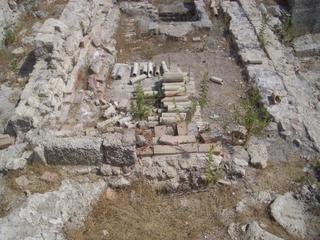

These first few pictures are right outside the Kibbutz. The river you see is called Crocodile River and 99 years ago the last croc was seen. This area is actually where the aqueduct begins. So imagine, that water travelled 12k to reach the city.
The ruins are actually a pipe factory for the aqueduct. Kind of funny how there was an ancient pipe factory on this land and now there is Plasson!

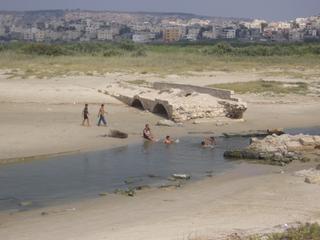
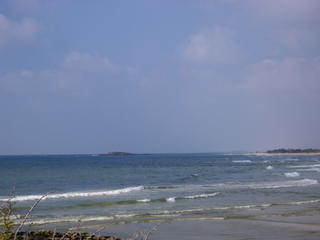

This is one of the surrounding Arab villages. And interesting to note, there is an old Arab cemetary on Ma-Agan Michael. We passed it as we left on our walk. The muslims from the villages come and visit the graves whenever they wish. I am going to go there to take some photographs.
This is a very poor village. The population is around 10,000. There are few jobs and a lot of crime and drugs. But many of the people work at Plasson or on the Kibbutz. It is good to see there are some relations going on.
I loved the farm animals at the end of the village. The were some places we passed where Arabic fisherman live right on the beach in little huts.

This is a part of the aquaduct. It is really cool. It is build with a special stone that is formed naturally by sand and the salt of the sea. It is easy to mold into shapes but also it is very strong, as it is over 2,000 years old.



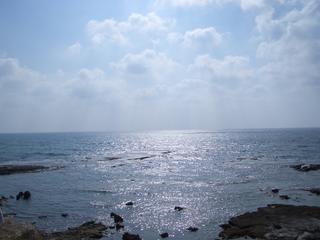


These are just some views and things I saw on the walk. The sun had amazing rays the whole way to Ceararea.


A picture of me and one of the German girls, Yana.
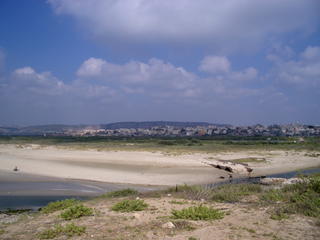
This was the tour guide, Ruben. He lives on the Kibbutz and also works in management in Plasson. I enjoyed his talk so much. Also I walked most of our trek with him and he is a very nice and interesting man. So I asked him if he would adopt me. We can get an adopted family, but usually they come to the director and he chooses. Ruben said yes, so this is my new daddy!
I met his wife Rosie today and they have 4 children. All of there kids have names that deal with water.
Starting next Shabbat I will eat dinner with them. It will be really nice to visit with some people other than Ulpanists.

A wedding in Ceasarea.

And finally a beautiful sunset. It is interesting to see the sunset in ancient places. It really makes you feel small in this great world.
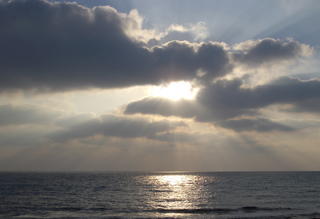


No comments:
Post a Comment